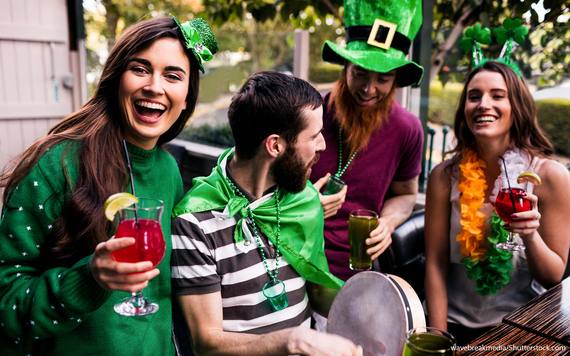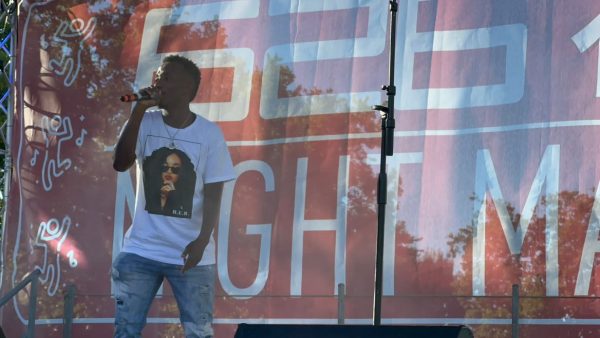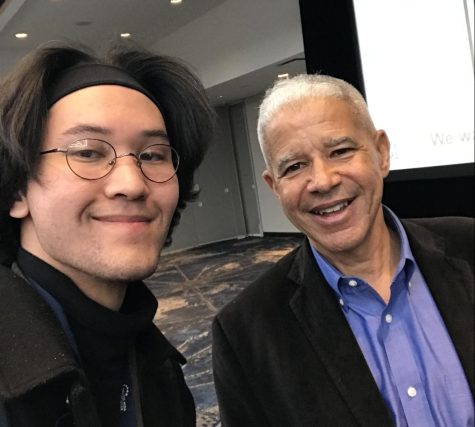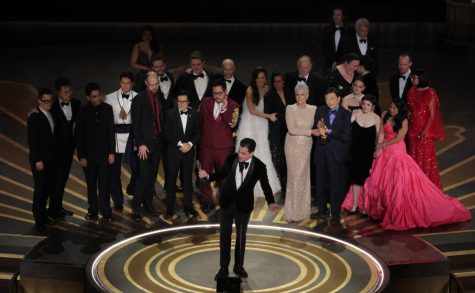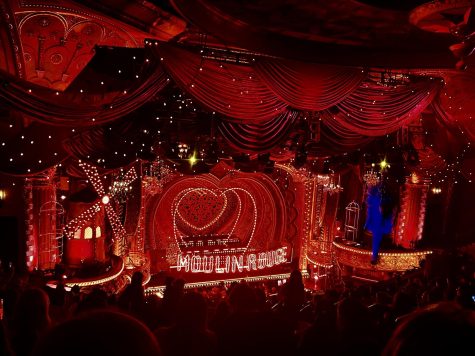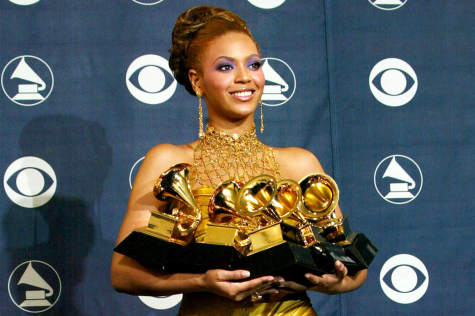Is celebrating St. Patrick’s Day considered appropriation or appreciation?
March 14, 2018
My mother’s entire family has Irish ancestry. So when the smell of corn beef hash fills our home, it is one of many indicators that it is indeed Saint Patrick’s Day. Although corn beef hash is not your regular meal in Ireland, it is a recognizable staple. It’s what the Irish immigrants could afford when celebrating their Saint Patrick’s Day here in America.
A 17th century holiday that was based on religious traditions has evolved into St. Patrick’s Day festivities across the globe. Many celebrate Irish culture with parades, special food, music, dancing and a bunch of green. As a child, I remember hearing kids say Saint Patrick’s Day was about “catching leprechauns.” Boy were they wrong.
Americans have taken this holiday, made it their own and celebrate it blindly. And this is cultural appropriation. Culture appropriation is taking aspects from a minority culture, for its aesthetics, without knowing the meaning behind it. And this is exactly what happens every March 17.
Culture appropriation is a big problem in America because our country is a melting pot of many cultures. A lot of people do not understand the line between borrowing and exploiting. When stores start to fill with four leaf clovers and leprechaun decor the celebration becomes exploitative. This makes the holiday appealing to celebrate without meaning and that is when the line is blurred.
Approximately 122 million people celebrate this holiday in America, according to the History Channel’s website. But only 34.5 million Irish people are reported in the US census. So what are the 87.5 million non-Irish people celebrating?
For them, St. Patrick’s Day is filled with drinking and huge parades — and wearing green. But in Ireland it is more of a religious holiday, and rightfully so. Unlike in America, the pubs are closed in Ireland.
More than 2 million spectators attend the New York City Saint Patrick’s Day Parade each year. More than 100,000 people watch as the color of the Chicago River is changed with about 40 pounds of green dye.
Not only are there numerous celebratory events, but this holiday generates a significant amount of revenue. Saint Patrick’s Day makes about 4.14 billion dollars in annual revenue, according to the National Retail Confederation, the world’s largest retail trade association. They also state that 83 percent of Americans wear green, 34 percent make a special dinner, 31 percent attend a party and 25 percent decorate their home or office. Over eight million Americans exchange Saint Patrick’s Day cards, according to Hallmark. This has become a commercialized holiday like Valentine’s Day, Mother’s Day, Father’s Day and Christmas.
Saint Patrick was actually a British man who was kidnapped and enslaved in Ireland. After he broke free from slavery he returned to Ireland because he claimed he had been called to spread God’s word. He converted the Irish to Christianity and baptized over 12,000 people, the king and his six sons in a single day, according to the Catholic Encyclopedia. Now this day is Saint Patrick’s Day.
In Ireland, Saint Patrick’s Day parades have been common since the 1960s. The biggest parade is in Dublin, which draws nearly half a million spectators, according to Dublin’s city website.
Every nationality has their oppressed population. Europe has the Irish, Americans have African Americans, the Latino community has Mexicans and Asians have Cambodians or Chinese. Each ethnicity that I named experiences discrimination on a daily basis in their communities as well as oppression in the past.
If the Irish were not considered part of white America I feel as if many people would be outraged or more sensitive to the holiday and it’s appropriation. Due to the lack of education revolving around this topic, many taint the meaning by picking bits and pieces they personally find admirable while disregarding the holiday as a whole. The Irish came into the US and were considered low class, but now none of that is accounted for as Americans continue partaking in St. Patrick’s Day however they want.
The Irish deserve respect that other ethnicities receive when it comes to traditions and holidays in America. In addition to this, there are other holidays that we should be mindful of when celebrating like Halloween and Cinco De Mayo. There is nothing wrong with admiring an ethnicity or religion and their traditions and wanting to know more, however one must be mindful in the ways they express this appreciation and be certain not to appropriate it.




